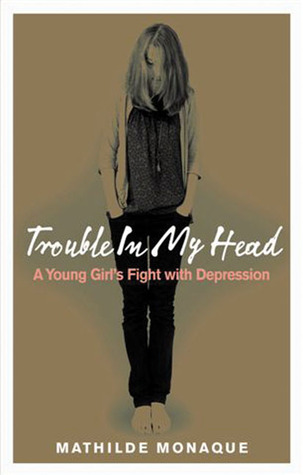
Book: Trouble In My Head
Author: Mathilde Monaque
Pages: 156
At the age of 14, Mathilde develops a deep and crippling depression. She is an extremely bright young girl but can't seem to shake the terrible feelings and thoughts she is plagued with. Her parents admit her to a short-stay hospital where she tries to figure out what brought on the depression and how she will ever get through it.
Trouble In My Head is a well-written and accessible short memoir about a young girl battling depression and anorexia in a hospital setting. I would recommend picking up this book if you or anyone you know suffers from these conditions.
The link between eating disorders and depression:
- Why some people are at risk for eating disorders isn’t clear but surveys show that depression is often a factor.
- Depression may lead to eating disorders but there’s also evidence that eating disorders can result in depression. “Being severely underweight and malnourished, which is common in anorexia, can cause physiological changes that are known to negatively affect mood states,” says Lisa Lilenfeld, PhD.
- “People who develop eating disorders feel as people that they’re not good enough,” Sacker says. “They become obsessed with perfectionism. That perfectionism begins to focus on what they eat. But underlying it is depression and anxiety."
WebMD





